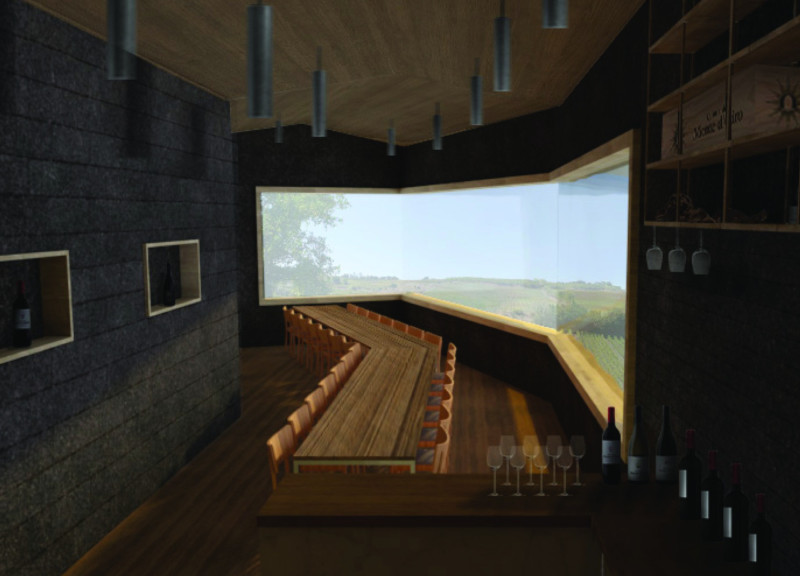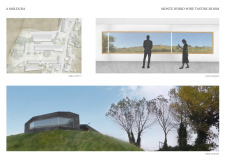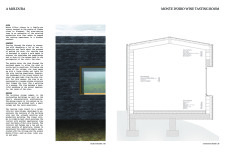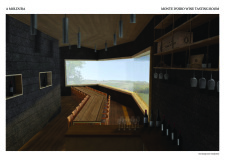5 key facts about this project
The design reflects a contemporary approach that respects local traditions and the natural landscape. The building's form is elongated and carefully contoured to harmonize with the rolling hills of the vineyard. This sensitivity to the site demonstrates a keen awareness of both natural topography and the architectural context of the area. The structure is more than simply a place for tasting; it represents a bridge between the old and new, marrying modern design with historical agricultural practices.
One of the primary functions of the Monte D’Oiro Wine Tasting Room is to facilitate a sensory experience. The layout encourages exploration and interaction, with a central tasting bar that invites guests to engage with each other and the staff while savoring the winery's offerings. The seating arrangements are designed to foster conversation, positioning visitors to appreciate the panoramic views of the vineyard and surrounding landscape. This thoughtful spatial organization enhances the social aspect of wine tasting, ensuring that the experience is both enjoyable and educational.
The project employs a variety of materials, such as locally sourced clay, slate stone, wood, and glass. The use of clay for the exterior finish grounds the building in the local soil, establishing a sense of place. Slate stone accents contribute durability and an appealing texture, complementing the earthy tones of the landscape. The extensive use of glass not only provides ample natural light but also creates a seamless connection between the interior and the exterior, allowing the dynamic views to become part of the experience. The warm qualities of wood are utilized in both structure and decor, contributing to an inviting atmosphere that feels both modern and timeless.
Unique design approaches are evident throughout the project. The roof form is intentionally inclined, not only enhancing the building's profile within the landscape but also efficiently managing rainwater. This design choice reflects a commitment to sustainability, allowing for an eco-friendly approach to drainage. The integration of natural light is another innovative aspect of the design. By strategically placing windows and using glass walls, the interior benefits from bright, inviting spaces that enhance the tasting experience. This design strategy emphasizes the natural cycle of day and night, linking the guests’ experience to the rhythms of the vineyard itself.
The architecture of the Monte D’Oiro Wine Tasting Room is characterized by its thoughtful dialogue with the landscape and its commitment to the principles of sustainability and community. The distinct layering of experiences within this space invites visitors to engage deeply with the locale while appreciating the artistry of winemaking. By embracing both modern architectural ideas and traditional viticultural practices, this project underscores the importance of place in the art of wine.
To gain deeper insights into the architectural plans, sections, and overall design of the Monte D’Oiro Wine Tasting Room, readers are encouraged to explore the project presentation further. Such an exploration will reveal how design can enhance experience and resonate with its natural surroundings.


























